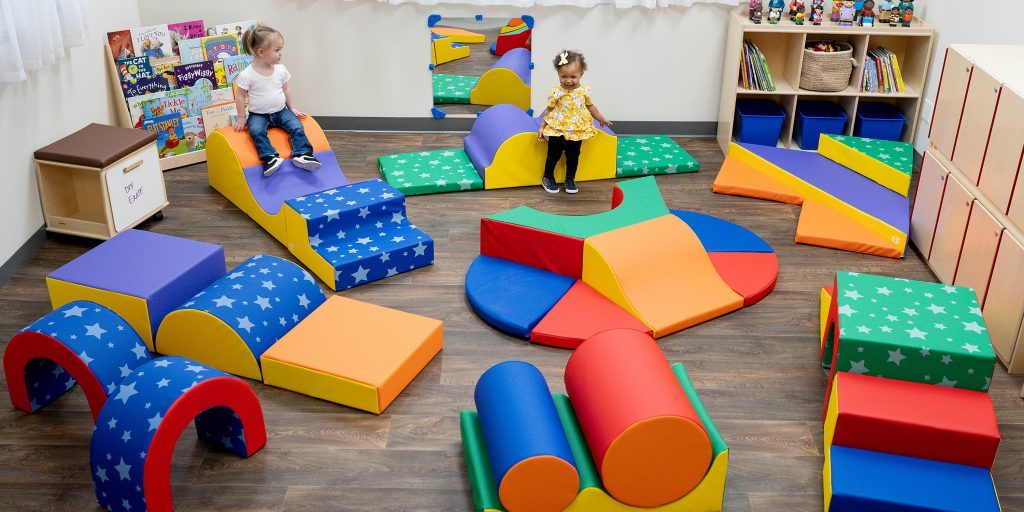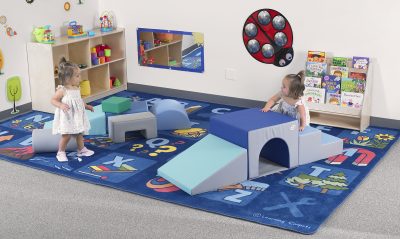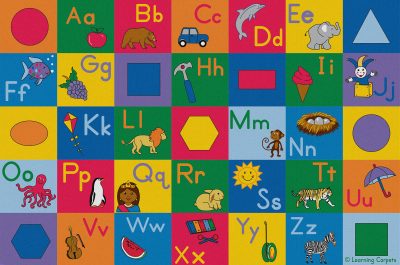
5 Strategies to Make Learning Fun

The Over & Under Tunnel Climber is sure to make active play a worthy reward. (Available in Contemporary (pictured here), Primary or Woodland colors.)
Toddlers love to learn. That being said, youngsters will choose playtime over learning any day of the week. Knowing this to be true, tech companies have incorporated the principles that make playing games fun into their learning programs. It’s called gamification. Pew Research Center describes gamification in the following way:
“The word ‘gamification’ has emerged in recent years as a way to describe an interactive online design that plays on people’s competitive instincts and often incorporates the use of rewards to drive action—these include virtual rewards such as points, payments, badges, discounts, and ‘free’ gifts; and status indicators such as friend counts, retweets, leader boards, achievement data, progress bars, and the ability to ‘level up’.”

Oh the places your kids will go! Field trips are great motivators for kids of all ages. Where can you take your kids on their next field trip?
It’s important to note, technology utilizes gamification to engage both adults and children. While you may be concerned with how these principles apply to children, neuroscientists are finding gamification techniques release feel-good chemicals in the brain resulting in higher levels of learning, participation, and motivation. The question becomes, how can caregivers, teachers, and parents use gamification techniques to motivate youngsters to learn outside of using technology?
The Gold Standard = Rewards!
To say gamification is new is really a misnomer. Teachers have been awarding students gold stars for decades. Kids build up gold stars and compare themselves to other kids via the number of stars they have accumulated. It’s partially about the gold stars but partially about human nature being competitive. Kids see how many gold stars other kids have accumulated, which makes them want to build up more gold stars to catch or surpass their peers.
Any reward can act as a motivator. When kids are given an allowance for doing chores each week, they are learning hard work = cash in their pockets. Rewards can act as a positive lesson for kids to learn and apply throughout their lives in this regard. It goes without saying, teachers will give students completely different rewards than parents, but rewards always motivate when structured correctly. Here are 5 rewards you can easily implement:
One: Get Up and Move
A positive reward kids enjoy is a chance to move around and play for a few minutes between lessons. 5-10 minutes of old school games like Head Up 7 Up might be the motivator kids need to get through a lesson. Learn about other ideas for games for indoor recess.
Games work well for short breaks, but the other alternative is to give youngsters the opportunity for playtime free from any specific structure. For example, soft play equipment is perfect for romping during indoor recesses. CF has options designed for classrooms of all sizes. We recommend the Jr. Activity Gym – 8 Piece Set for larger spaces, Tumble ‘n Roll Climber for medium-sized spaces, the Marshmallow Upside Downs for use in corners, and the Over and Under Tunnel Climber or the Climb and Play 6 Piece Play Set for small spaces. (Over and Under Tunnel Climber and the Climb and Play 6 Piece Set are both available in 3 color options!)
Two: Schedule a Field Trip
Field trips are excellent motivators. They also help kids to connect with the world in new ways. If your school doesn’t have the budget for a trip to a museum or the zoo, try taking a virtual field trip where you explore new places with images and videos. You might invite a guest to visit your classroom. Exposing your kids to a clown who makes balloon animals, a police officer, a fireman or some other local figure will turn into a fun surprise for your kids!
Three: Offer Choices
Kids are constantly told what, where, when, and how to do things. To empower them, give them some options. Let them choose. Did you ever read Choose Your Own Adventure books when you were a kid? Children become more engaged with activities when they are given a choice for their reward activity.
Four: Use Arts & Crafts Projects as Rewards
Teachers and caregivers are super creative, yet they are no longer forced to think of every idea themselves or rely solely on lesson plans. The internet has been a game-changer in terms of sharing fun ideas for arts and crafts projects. For example, have kids participate in an upside-down art lesson. Attach construction paper underneath tables or desks and have kids lay on the floor to draw a picture. It will give them a new perspective on art! For more creative and inexpensive ways to learn check out this site.
Five: Incorporate Interactive Games

The Colorful Alphabet and Geometric Shapes Rug is a perfect tool teachers can use to make learning fun.
Incorporating games might be an obvious choice as a strategy since we discussed gamification earlier in this blog. Toddlers spend a lot of time memorizing their ABC’s, numbers, shapes, the states, countries of the world, and many other facts. Technology is successfully stimulating engagement and learning by incorporating games, but it’s not the only option there is. In fact, one element missing from technology-driven learning is human interaction. Socializing with peers and adults is an important piece of the school pie. When kids miss out on this element, their developmental process can be impeded. Children learn valuable problem-solving skills when they play interactive games involving cooperation and teamwork in a live situation.
One way to transform memorization into fun activities is by using an educational rug or other props. We recommend carpets, such as MyValue Fishing or MyValue Shapes & Alphabet, be used as fun teaching aids for memorization challenges.
Lastly, psychologists are suggesting parents and caregivers seriously limit the amount of time toddlers spend using computers and tablets.